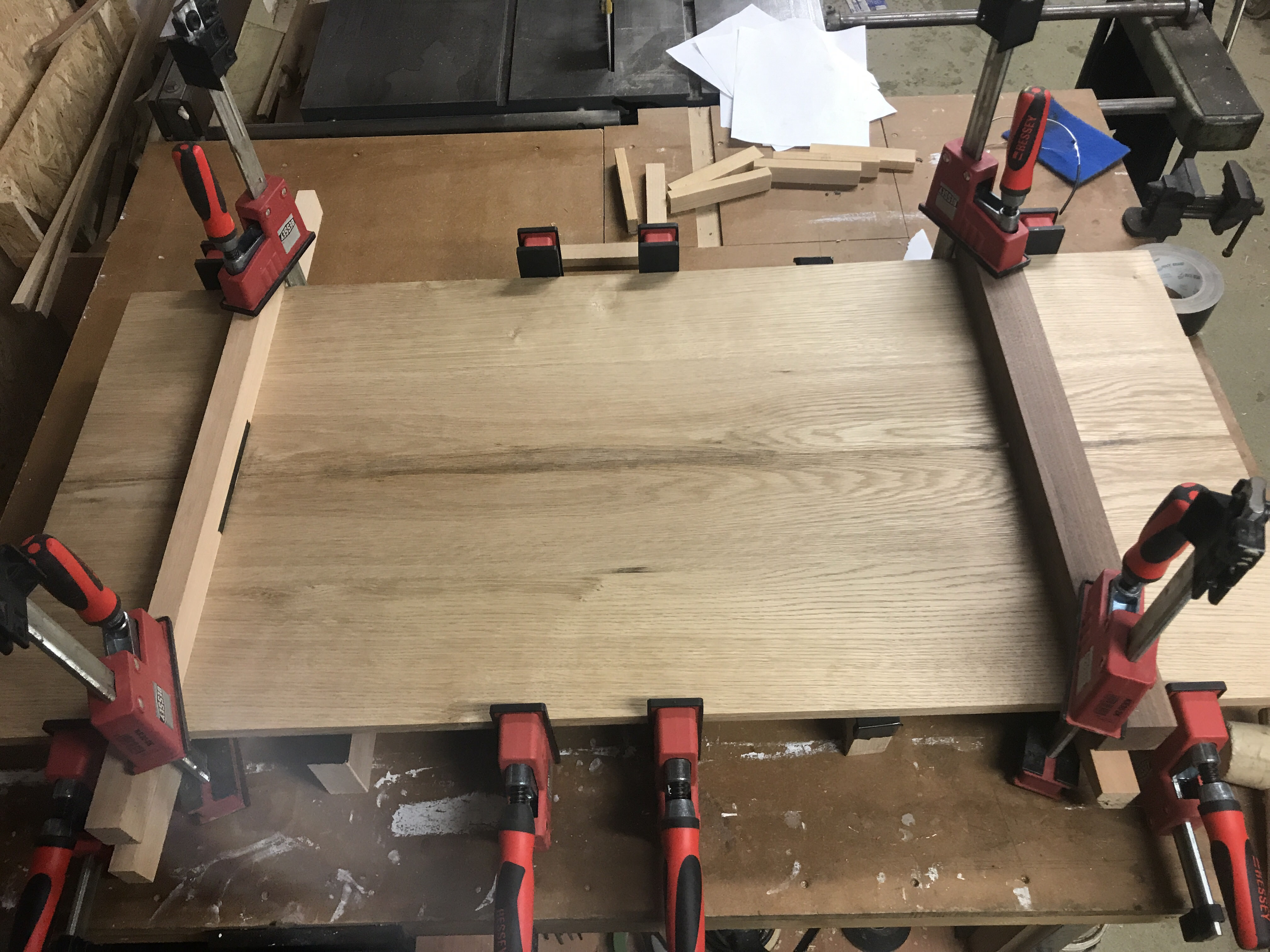hi guys,
so i am building an oak table top at the moment and would like some advice on the glue up itself. i bought all the oak and had it planed on one face and jointed on one side and then ran it through my electra beckum planer to square up the adjacent faces. I then used a biscuit joiner to get everything nicely aligned for the glue up. Unfortunatly due to the capacity of my planer i had to cut down the original width to be able to pass the edges through on the planer. so i had 6 panels to glue up.
i dont have any sash clamps or anything in my shared workshop so i set the panels on some 2x4s and glued up the panels with regular wide clamps.
everything is pretty dead flat needing only some minor leveling treatment with a belt sander before orbital sanding. The only minor problem is the last panel isnt so well aligned with the others and sort of angles up slightly.
As a fairly novice woodworker i feel i have two choices at this stage belt sanding the last 3-4 inches on this section as this is the only really noticible part where its starts to angle up. or running a track saw through the glue line and biscuit joints and trying to glue it up to the rest of the panel flat again.
its not a major slant but enough for me to notice when looking at the joined endgrain. what do you think would be the best route to go?
so i am building an oak table top at the moment and would like some advice on the glue up itself. i bought all the oak and had it planed on one face and jointed on one side and then ran it through my electra beckum planer to square up the adjacent faces. I then used a biscuit joiner to get everything nicely aligned for the glue up. Unfortunatly due to the capacity of my planer i had to cut down the original width to be able to pass the edges through on the planer. so i had 6 panels to glue up.
i dont have any sash clamps or anything in my shared workshop so i set the panels on some 2x4s and glued up the panels with regular wide clamps.
everything is pretty dead flat needing only some minor leveling treatment with a belt sander before orbital sanding. The only minor problem is the last panel isnt so well aligned with the others and sort of angles up slightly.
As a fairly novice woodworker i feel i have two choices at this stage belt sanding the last 3-4 inches on this section as this is the only really noticible part where its starts to angle up. or running a track saw through the glue line and biscuit joints and trying to glue it up to the rest of the panel flat again.
its not a major slant but enough for me to notice when looking at the joined endgrain. what do you think would be the best route to go?




































